Shopping on the poverty line - what can you eat?
- Published

Stefen Chow and Hui-yi Lin work out what a poverty-line budget buys you
What happens when a photographer and an economist work together to document poverty around the world? When Stefen Chow and his wife, Hui-yi Lin, set out to answer that question, they came up with a photo project, The Poverty Line.
Ms Lin calculates how much money people living at the poverty line have to spend on food each day. In the US, that figure comes to $4.91 (£3.24) a day, while in Madagascar, it amounts to 64 cents.
Mr Chow then documents how much food that money buys in each country, placing the food against a local newspaper.
The award-winning project's website, external has just been relaunched, making it more interactive for users to learn what it means to be poor and hungry from Tokyo to Rio de Janeiro.
Mr Chow and Ms Lin explained why they set out to document the global poverty line.
How did you come up with the idea to do this project?
Ms Lin: We had been thinking about making something meaningful, which kind of combines our two interests. Both of us work in different fields and get exposed to different areas and ideas.
Poverty is something we have also observed during our travels, so it's an issue we were concerned about.
Coming from an economic background, it is always a top-down look at issues, to understand big state policies, government directives and things like that.
But as an individual, I am always touched by how things are really on the ground, different from what you have imagined from headlines.
How did your past travel experiences inspire you to study poverty?
Mr Chow: There was a particular week when I was in New York and Calcutta within the same span of a week.
I remember I was in the Wall Street area. You see a lot of people with suits and ties, nice sunglasses, nice iPods. But on the street, you also see beggars. You see people sleeping on the trains, you know, in the wee hours in the morning because that is the only way you can sleep.
When I was in Calcutta, I remember that as we were driving from the airport to the city itself, the left lane on the roads were actually full of homeless people sleeping.
The reason I got from the locals is that that is the only public space where you can sleep. You cannot sleep outside buildings because the security guards will chase you away.
I guess the whole question was: is it better to be poor in New York or Calcutta? You know that question, that curiosity, that concern really hit me, so we started this project. It asks, what does it mean to be poor?
How did you come up with the concept behind the project? Why do you take photos of food?
Ms Lin: I think food plays a very important part in setting absolute poverty lines. Basically, countries and organisations like World Bank, they will look at what is the minimum amount there, because in the end, food is a necessity of life.
So what is the minimum of calories that sustains a person through a day and they will ask, how much then do you need to spend in that country in a day to buy a basket of food items that will meet those calorific requirements? That's the basis of calculating the absolute poverty line.
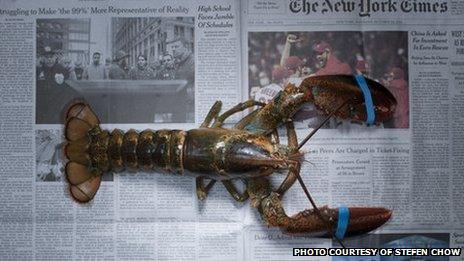
In the US, a person living at the poverty line can spend $4.91 a day on food
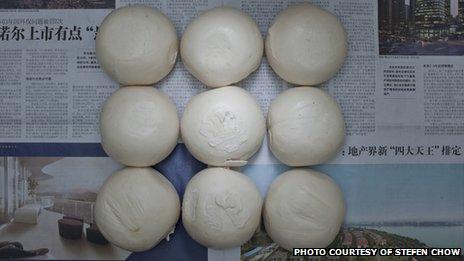
In China the equivalent of $1 a day buys these steamed buns
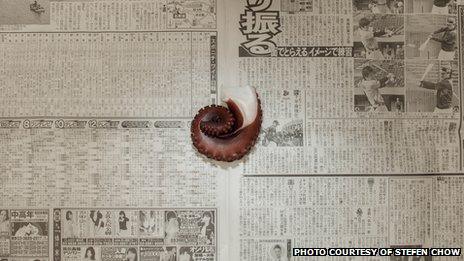
In Japan, this is what $4.84 a day would amount to in octopus
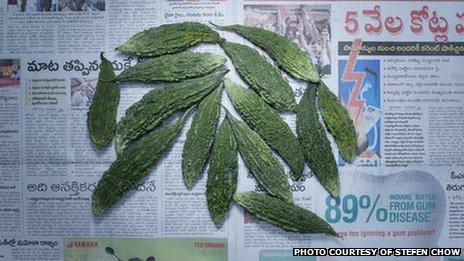
In India, the equivalent of 60 cents a day would buy you this
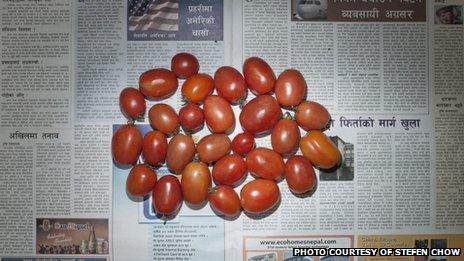
In Nepal, 45 cents a day buys about two dozen tomatoes
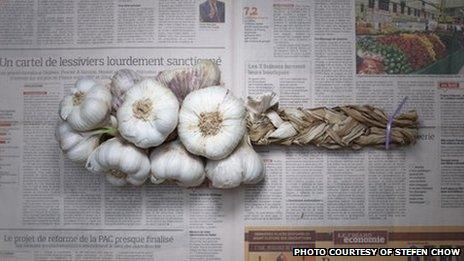
In France, a person living at the poverty line can spend $7.68 a day on food
Poverty lines are actually quite controversial in some circles. The line as to whether you are poor or not is debatable. Governments also have a lot of interest in determining where that line falls and deciding how many poor people they have in their country. Did you ever considering using a measurement other than the poverty line?
Ms Lin: We grew to understand more about the poverty line through this project.
Of course, it's the standard a lot of countries use and it has a lot of meaning that trickles down and impacts people's lives because governments articulate policies and give out assistance based on this poverty line.
This is something on paper that affects what people get on their plates at home.
Yes, the concept is controversial. For example, India had a debate: is the poverty line set too low? Is it realistic? Can people actually survive on that kind of figure?
Have you visited any countries that have stood out from the rest when it comes to documenting the poverty line?
Mr Chow: The first country we did it was China. And initially, we found a figure to be 3.3 yuan (53 cents, 35 pence) per person per day.
I think that figure shocked me because it is very little to begin with. You buy a coffee outside and it costs three times that amount. When you really go down to the market, you found you actually can afford some stuff. But a lot of things are so far from your choices.
The second country we did was Japan. The poverty line is calculated differently, but it is about $5. I was very surprised that even though it is a lot more than 3.3 yuan, the ingredients you can get is also a lot less.
You can get a lot less green vegetables for the same amount of money than you can get for 3.3 yuan in China. It certainly gives an insight into how food costs differ in different countries.
Why did you decide to take people out of the equation by only photographing the newspaper and the food?
Mr Chow: I think that photojournalism, having worked in the field, I think it's a Catch 22 type situation.
If I decide I want to focus on poverty, I go and focus on people who are poor. In the end, I might produce results that I was looking for, so it actually skews the message.
We basically go into a country with a figure in mind, that's all we have. The newspapers, the food, that's all going to happen randomly.
How do you choose the food you are going to photograph?
Mr Chow: We certainly talk to people on the ground, poorer people. But we actually choose the food based on research we have done on poor behaviour.
Poor people have desires like everyone else. When their income increases, they don't necessarily spend it on more calories. They spend it on better calories.
So, I mean that poor people, yes, most of them are stuck with food choices like normal staples, like rice, grain, potatoes, based on where you live, where you are. But every now and then, they also want meat, vegetables, something nice, a dessert, candy. So that's why our photographs actually show that.
In America, everyone living there talked about processed food. Fast food is cheap and I actually went that direction.
A lot of processed food is fine in that supermarket and we were using $4.90.
But the thing I discovered is packaged food is big when they are in their packages. When you take it apart… I remember we got (potato) chips, the bag is big, and the pictures are bigger as all the newspapers were taken at the same scale.
I realised how much raw potatoes cost in relation to the chips you get. A lot of it is actually air - fat calories rather than nutrition and the stuff you might need more.
- Published9 March 2012
- Published6 March 2013
- Published9 March 2013
- Published2 June 2011